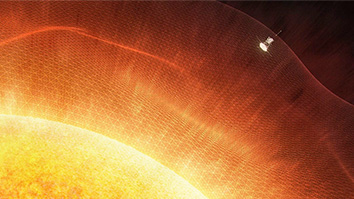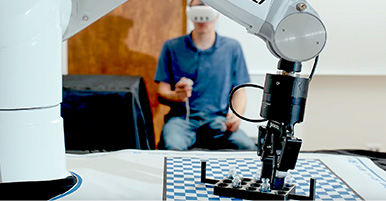Citation
Pejakovic, D. A., Campbell, Z., Kalogerakis, K. S., Copeland, R. A., & Slanger, T. G. (2011). Collisional relaxation of O-2 (X-3 Sigma (-)(g), nu= 1) and O-2 (a (1) Delta (g), nu= 1) by atmospherically relevant species. Journal of Chemical Physics, 135(9).
Abstract
Laboratory measurements are reported of the rate coefficient for collisional removal of O2(𝑋3𝛴−𝑔 , υ = 1) by O(3P), and the rate coefficients for removal of O2(a1Δg, υ = 1) by O2, CO2, and O(3P). A two-laser method is employed, in which the pulsed output of the first laser at 285 nm photolyzesozone to produce oxygen atoms and O2(a1Δg, υ = 1), and the output of the second laser detects O2(a1Δg, υ = 1) via resonance-enhanced multiphoton ionization. The kinetics of O2(𝑋3𝛴−𝑔 , υ = 1) + O(3P) relaxation is inferred from the temporal evolution of O2(a1Δg, υ = 1), an approach enabled by the rapid collision-induced equilibration of the O2(𝑋3𝛴−𝑔, υ = 1) and O2(a1Δg, υ = 1) populations in the system. The measured O2(𝑋3𝛴−𝑔, υ = 1) + O(3P) rate coefficient is (2.9 ± 0.6) × 10−12 cm3 s−1 at 295 K and (3.4 ± 0.6) × 10−12 cm3 s−1 at 240 K. These values are consistent with the previously reported result of (3.2 ± 1.0) × 10−12 cm3 s−1, which was obtained at 315 K using a different experimental approach [K. S. Kalogerakis, R. A. Copeland, and T. G. Slanger, J. Chem. Phys. 123, 194303 (2005)]. For removal of O2(a1Δg, υ = 1) by O(3P), the upper limits for the rate coefficient are 4 × 10−13 cm3 s−1 at 295 K and 6 × 10−13 cm3 s−1 at 240 K. The rate coefficient for removal of O2(a1Δg, υ = 1) by O2 is (5.6 ± 0.6) × 10−11 cm3 s−1 at 295 K and (5.9 ± 0.5) × 10−11 cm3 s−1 at 240 K. The O2(a1Δg, υ = 1) + CO2 rate coefficient is (1.5 ± 0.2) × 10−14 cm3 s−1 at 295 K and (1.2 ± 0.1) × 10−14 cm3 s−1 at 240 K. The implications of the measured rate coefficients for modeling of atmospheric emissions are discussed.


